from Menindee, Tuesday, 22 January 1861.
 |
 |
Original item held at the State Library of Victoria, SLV MS13071, Box 2083/4, Item #9. |

This letter accompanied Becker's Fifth Report along with this note and seven sketches. It was posted in Menindee on Tuesday, 22 January 1861 and was received in Melbourne on 5 February 1861.
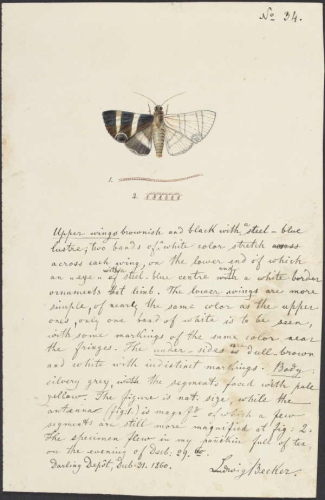 Ludwig Becker's Expedition Sketchbook H16486, Australian Manuscripts Collection, State Library of Victoria. |
34. [Owlet moth] | |
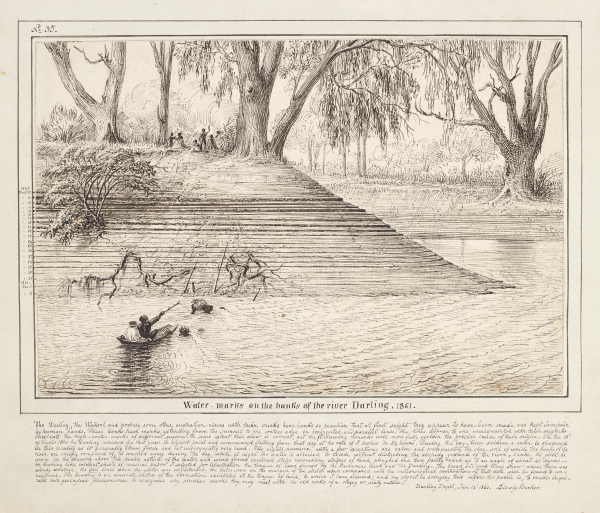 Ludwig Becker's Expedition Sketchbook H16486, Australian Manuscripts Collection, State Library of Victoria. |
35. Water-marks on the banks of the River Darling. | |
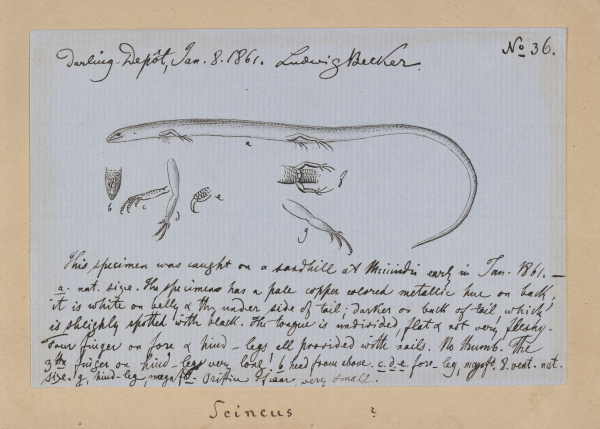 Ludwig Becker's Expedition Sketchbook H16486, Australian Manuscripts Collection, State Library of Victoria. |
36. Scincus | |
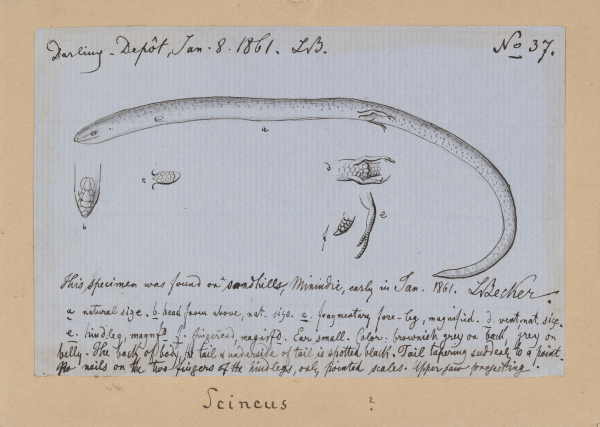 Ludwig Becker's Expedition Sketchbook H16486, Australian Manuscripts Collection, State Library of Victoria. |
37. Scincus | |
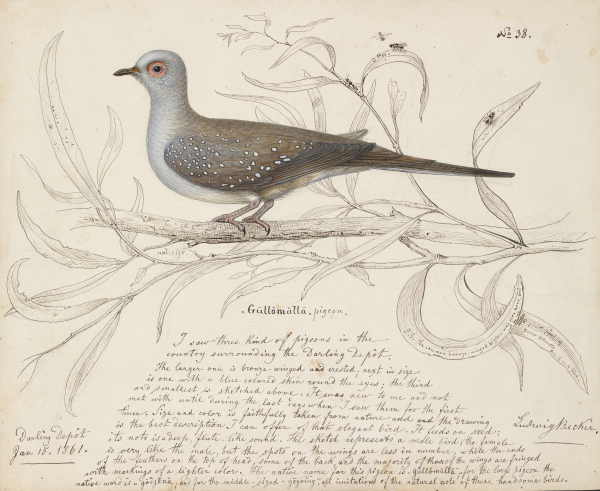 Ludwig Becker's Expedition Sketchbook H16486, Australian Manuscripts Collection, State Library of Victoria. |
38. Gullomalla | |
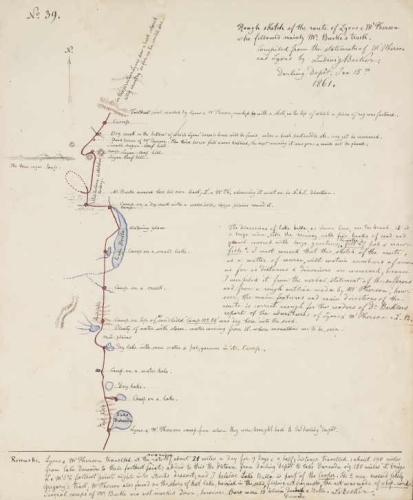 Ludwig Becker's Expedition Sketchbook H16486, Australian Manuscripts Collection, State Library of Victoria. |
39. Rough sketch of the route of Lyons & M'Pherson | |
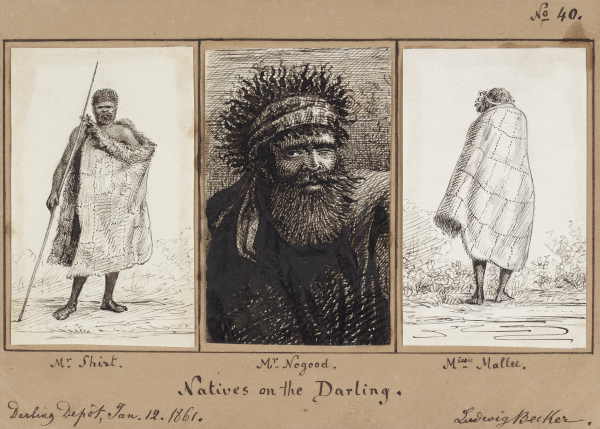 Ludwig Becker's Expedition Sketchbook H16486, Australian Manuscripts Collection, State Library of Victoria. |
40. Natives on the Darling |
1861, Tuesday, Jan.22. Today 3 month have passed away since we arrived here. I think it not worth while describing a camp life. I will only put down a few lines stating my occupations while here. I rose with the sun & was the last in bed. During that time the hours were occupied by me daily with meteorological observations- investigations in objects of nat: history- sketching-writing-and the necessary camp-work. Now & then a bullock was killed & the meat salted & dried; or I went out shooting birds for procuring fresh meat; of late I & the cook were busy with drying about 150 large fish which the falling waters of the Darling brought back from the Billibongs. It remains now to say a few words about my sketch. The greater number of these drawings, I think, don't want any explanation, the remarks attached to them will suffice; still, a few words about some of the sketches I consider necessary & I begin with:
I have the honor to remain, Sir, |
||
